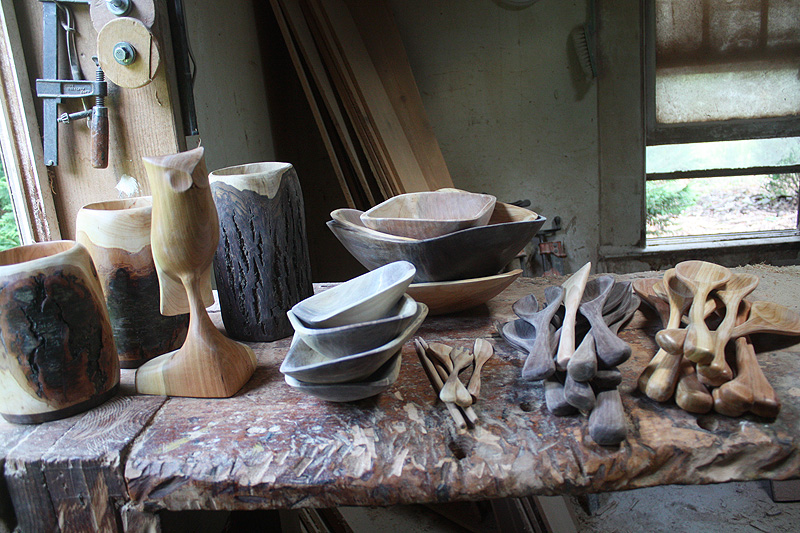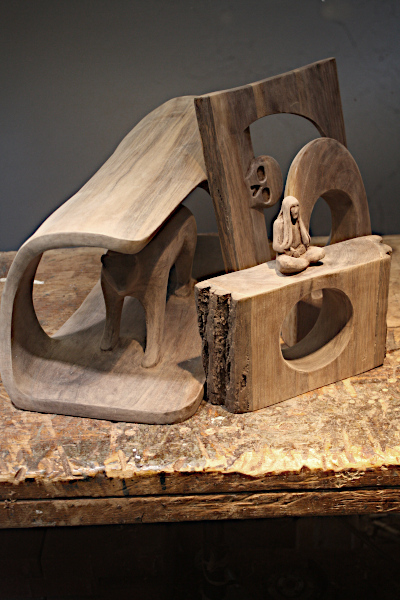|
|
|
Assorted pieces in walnut and cherry, sanded and awaiting another coat of finish. |
|
I finish my work with Wood Bowl Finish, that I purchase from Woodcraft. I have used this for many years and I feel it works as well or better than the many other finishes I've used. Initially I purchased it just for use with treenware since after curing, it's safe for use in food. But I liked the look I was getting and found that it is very durable and water resistant, so now I finish everything with it. Another reason I use Wood Bowl Finish for all pieces is that it will begin to gel in the can if not used up in a month or so and I don't want to bother with transferring it to progressively smaller containers. By using it on all pieces, I get to the bottom of the can before it gels. Many woodcarvers have their "special finish" that they swear by (and sometimes go on and on about). My experience is that there are many good finishes, but more importantly is good application. I apply at least three or four coats with sanding in between to even the most simple piece and with more complicated pieces, I lose track of how many. I apply the first coat liberally with a brush and wipe the excess off just enough so it doesn't run anywhere. The wood is still very porous at this point and will draw in most of the finish. After it dries I sand with 220 grit sandpaper, which is where I left off before applying the finish. All subsequent coats I brush on sparingly and wipe off more carefully, Because the wood is beginning to seal. |
Four walnut pieces, sanded |
|
After the second coat, the rough spots, over-cuts, and sandpaper scratches from previous grits become apparent. This is typically in the more detailed areas and places that are harder to access. I take care of these with whatever grit of sandpaper or tool that's required and then apply the next coat of finish. It's not unusual for the more open and simpler parts of a piece to finish up much sooner such that I go over them lightly or not at all and focus on the stubborn spots until they catch up. In the four pieces above the stubborn spots are the human figures, where there is more details, and the hard to reach parts, which describes much of the bear carving, particularly the area where the two figures are in close proximity. Most pieces will never be perfect, so it's a judgment call as to when to say the sanding is good enough. Fortunately, the more detailed areas are more forgiving of imperfections and hard to reach parts are also hard to see, so there is some justice in the world. At the same time with the areas that are easy to reach and most visible, I strive to finish to perfection because that is what will characterize the piece. Eventually I transition to 320 grit and finally to steel wool where applicable (smooth, open areas). Another light coat of finish, steel wool again and eventually another judgment call - when to stop. I like a soft, satin luster in the end and exactly when that appears will vary with different types of wood and even with different parts of the same wood, but it will come. The process is a bit tedious at times, but it's worth
the effort. The actual time involved is minimal compared to the overall time required to create the
piece and especially so compared to the many years the piece will be out in the world to be
scrutinized, handled, and, hopefully, admired.
|


